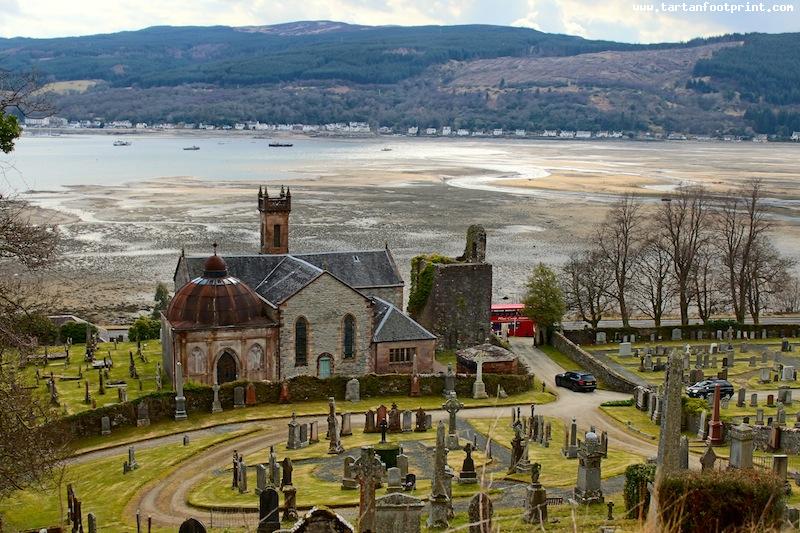Clan Campbell Mausoleum Restoration Begins

The dome topped mausoleum in front of Kilmun Parish Church
Work has begun on restoring the final resting place of twenty generations of Campbell chiefs. Built in 1798, the current mausoleum is on the site of an earlier chapel where Campbells have been buried since the 15th century. The mausoleum is located within the grounds of Kilmun Parish Church on the banks of the Holy Loch in Argyll.
Following six years of campaigning, £1m in funding was awarded to the community organisation behind the restoration drive. Donors included Historic Scotland, the Heritage Lottery Fund, the Argyll and Bute Council and the Argyll Estates. The mausoleum has fallen into disrepair after the cast iron dome, forged in Glasgow’s shipyards in 1890, began leaking soon after it was installed. The restoration project will be supervised by a team of archeaologists because of the building’s status as a scheduled ancient monument.
Welcoming the announcement, Dinah McDonald, Chair of Argyll Mausoleum Ltd said: “We’re thrilled that after years of campaigning, the Mausoleum has been given the recognition it deserves. We would like to thank everyone for their support and contributions. The funding will go towards vital restoration of the building and artefacts. We also want to build new visitor facilities within the adjacent Church of Scotland and open the Mausoleum up to the community, schools and visitors”.
Records indicate that Campbell chiefs have been buried in Kilmun since at least the 15th Century. This tradition began with the untimely death in 1422 of Celestine, the son of ‘The Black Knight of Loch Awe’ Sir Duncan Campbell. A fierce snowstorm prevented the burial party from reaching Innishail, so Sir Duncan chose to bury his son beneath the aisle of the church at Kilmun. Sir Duncan and his wife Marjory (great, great grand-daughter of Robert the Bruce) were subsequently also buried in the church with their effigies above their tombs, establishing the clan tradition. A private chapel for burying Campbell chiefs and their families was constructed off the nave of the church by the 9th Earl in 1669. This was replaced by the present mausoleum built in 1798. The last Campbell chief to be buried in the mausoleum was the 10th Duke of Argyll in 1949.
Work is expected to begin in January 2014, with completion plans scheduled for the summer. David McKenzie, director of Argyll Mausoleum, said the mausoleum has wider historical importance as it contains medieval burial effigies dating back to the 1450s which are thought to be the last examples of such quality in Scotland. “They are not only of incredible historical importance, they’re also of incredible quality. The stone carvings are incredibly detailed. They show how a lady would have dressed, down to the beading on her gown. The armour worn by the lord is said to be evidence that even then, the Campbells had aspirations to be more than just a Highland clan.”
A list of those buried in the mausoleum can be found here.
Tagged










